Blokus Duo theory and strategies [#33]
Strategies you can use to become a better Blokus Duo player.
![Blokus Duo theory and strategies [#33]](/content/images/size/w1200/2023/08/33unclean-min.jpeg)
I'm a big fan of Blokus! It's a great game that is surprisingly complex given the simple rules. I've spent many hours playing Blokus (and Blokus Duo) with my dad, and I've devised a number of strategies that I find to be effective.
I think Blokus Duo is the better game. It's much shorter, doesn't get boring, and every game is completely different. So I'm going to talk about Blokus Duo strategy and theory in this post!
Rules
Objective
Each player has 21 unique pieces of varying size and shape, which they place down on a 14x14 board through the course of the game. The player with the fewest unit squares left unplayed (when neither player can possibly place any pieces) wins.
Gameplay
- Choose one player to go first. That player (who we will call 'Player 1') must place down one of their 21 pieces so it covers one of the starting spots (labeled orange). The other player ('Player 2') must do the same to cover the remaining starting spot.
- Players 1 and 2 will alternate placing pieces (they will each take turns placing 1 piece). Once a piece is placed on the board, it cannot be moved and stays there for the whole game. If a player cannot possibly place one of their pieces on their turn, then they must skip their turn.
- There's just one rule for piece placement: each piece you play must touch at least one other piece of the same color, but only at the corners!
- Once neither player can place any of their pieces, the game ends. Each player counts up the total number of unit squares (not pieces) that they have left. The player with the lower number wins.
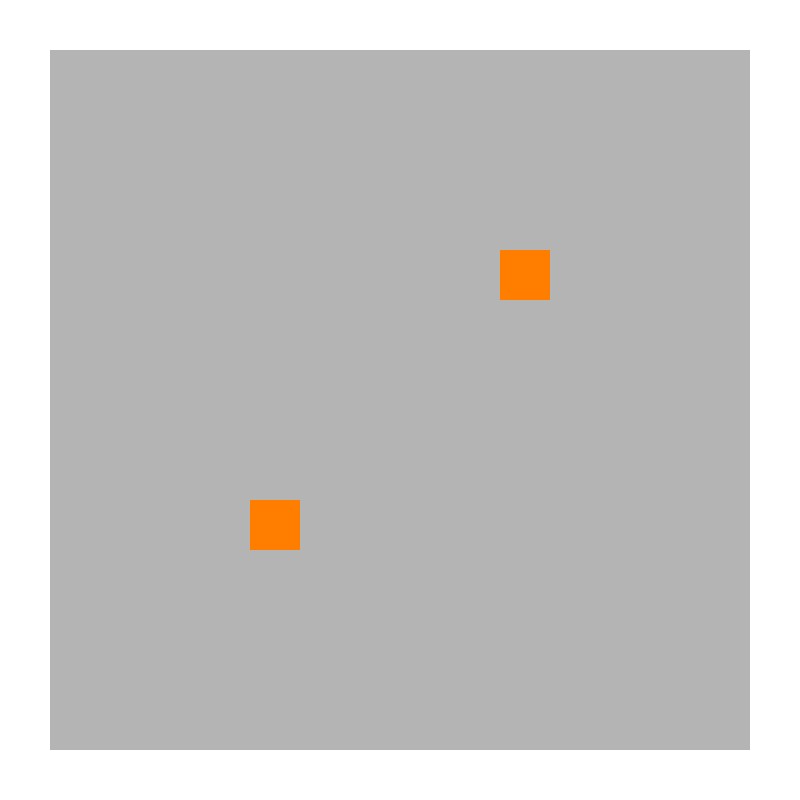

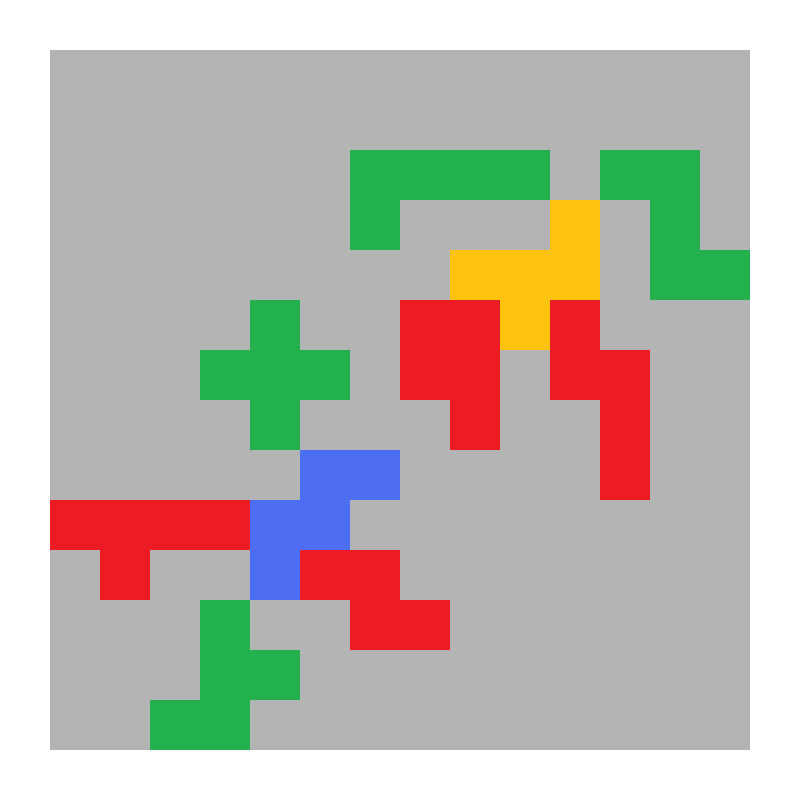
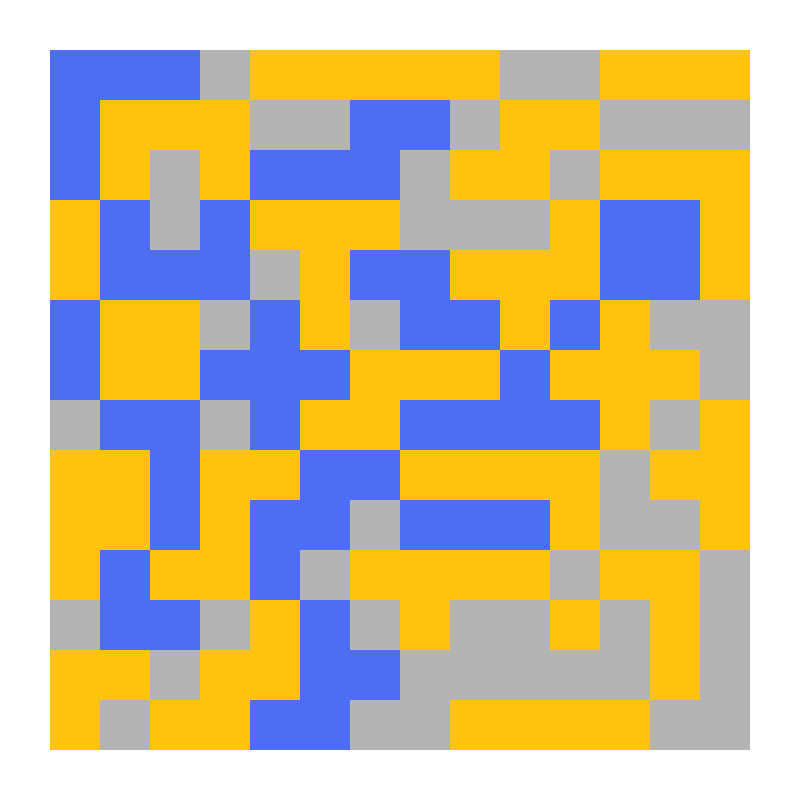
1. the orange starting spots // 2. how a game might begin // 3. valid and invalid piece placements for both blue and yellow's second moves (green = valid; red = invalid) // 4. a finished game – yellow won because they placed down all of their pieces, while blue still had 7 pieces (and 33 unit squares) remaining.
General Strategy
Now the rules of Blokus are very simple, but the strategy is very complex and makes the game interesting! Here are a few general strategy tips I've picked up:
Play Your Big Pieces First
This should be relatively intuitive. It's best to get rid of your bigger pieces first, as they'll cost you a lot in the end if you can't play them. It's also best to save your 1-piece and 2-piece so you can squirrel into tight areas and gaps.
Play in the Center
If you rush to the edges too early, you're very likely to be cut off by your opponent in the center. You should always play close to the center of the board (at least in the beginning of the game).
Play in Contested Areas
If you have a piece that is 'secured' (ie. your opponent cannot possibly block you from playing it), you should generally wait until the end to play that piece. Instead, play in contested areas where you are actively fighting for space with your opponent.
Play Your Long Pieces on the Board Edges
If you play your long pieces in the middle of the board, you allow your opponent to play their long pieces right next to yours (where you can't block them). If you play them on the board edges, you rob your opponent of that opportunity.
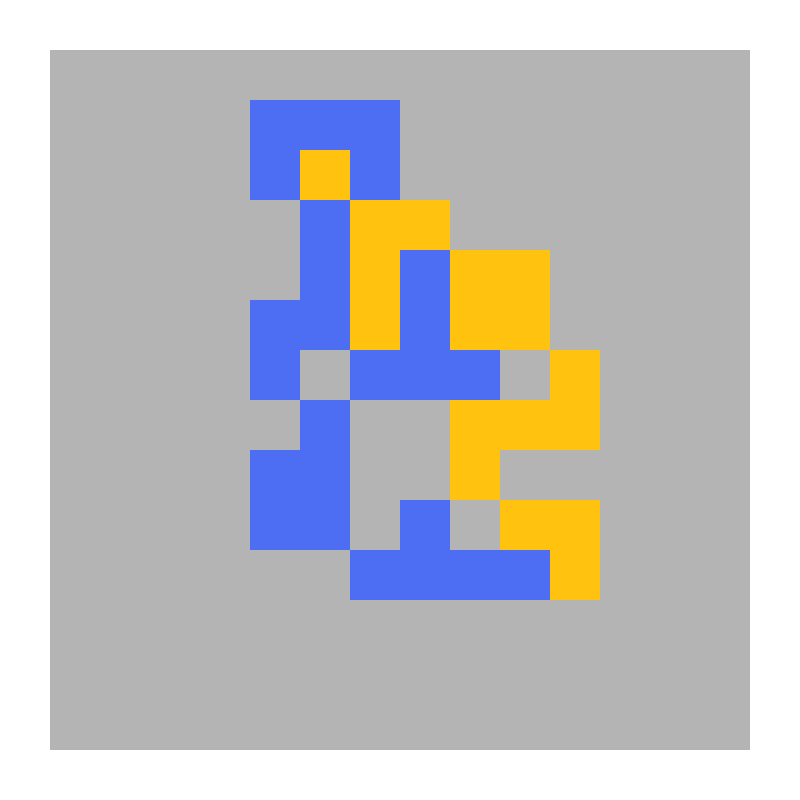
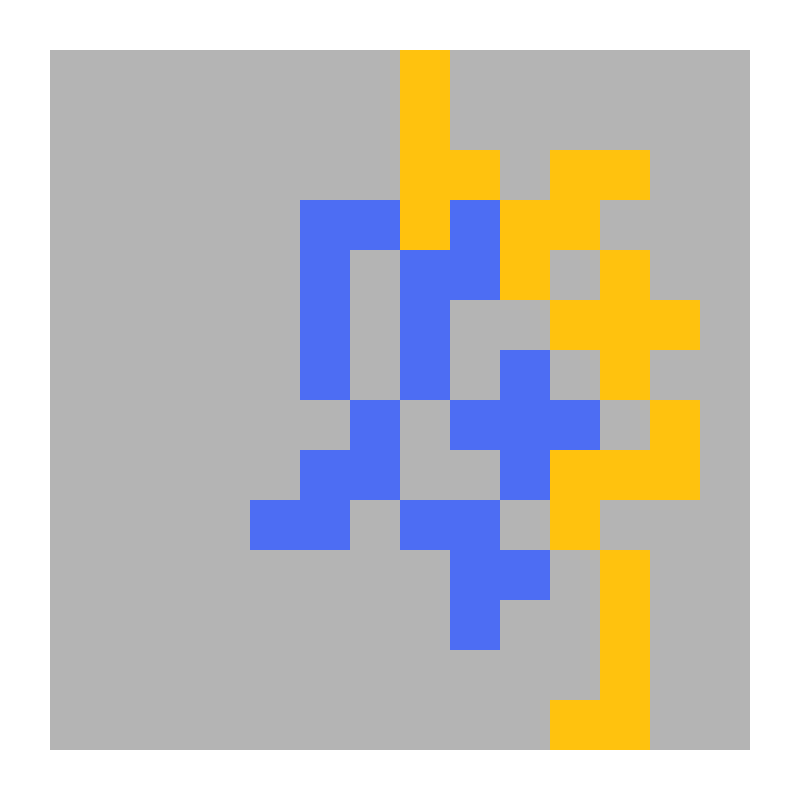
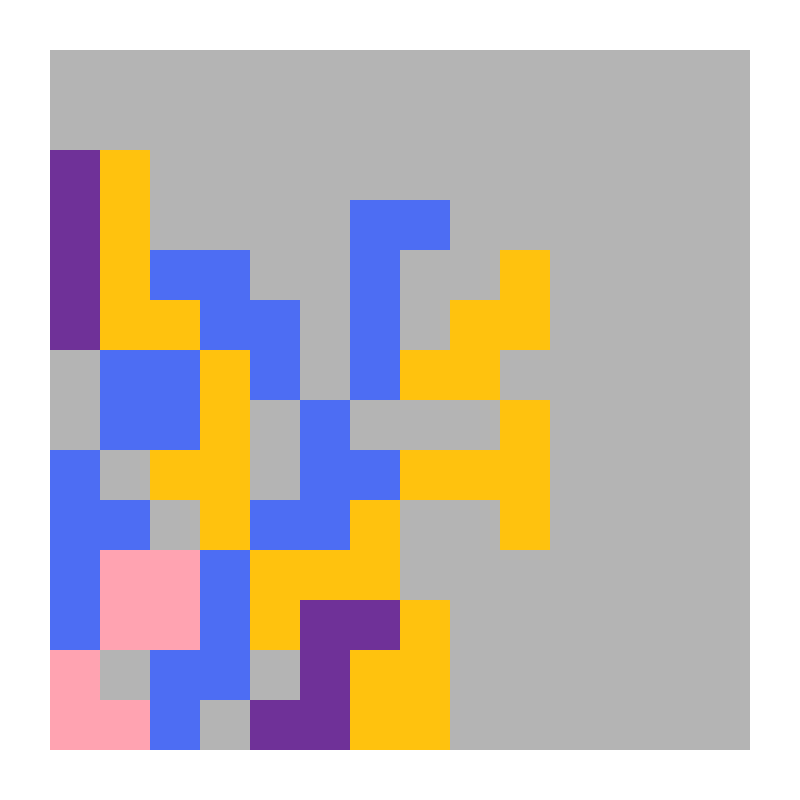

1. yellow will have a much harder time in the late game, because they aren't playing their larger pieces first // 2. yellow didn't fight for the center, and will have a tough time recovering // 3. neither blue nor yellow should play their purple or pink pieces immediately. 4. // blue is already at a disadvantage, given that yellow can play their long pieces along blue's.
Types of Moves
I won't talk about the particularities of each individual piece. Instead, I'll just talk about the 4 general moves that I find effective.
Hugging
This move is typically characterized as "friendly". A hugging move doesn't block many of your opponent's corners, but gives you more corners. It's especially useful for ensuring that you have access to an area, and I tend to use hugging moves most in the beginning of the game.
Semihugging
This move looks friendly, but is extremely useful for stonewalling your opponent later. I love semihugging moves and use them all the time – because if your opponent isn't careful, you can permanently lock off your opponent's access to an area (with a stonewalling move).
Stonewalling
This is also one of my favorite moves, because it completely denies your opponent access to an area (read: and destroys their hopes and dreams). I tend to setup a stonewalling move with a semihugging move.
Carving
A carving move guarantees that you can definitely play one or more of your pieces in the future. I generally use this move more in the endgame, but can be quite hard to spot.
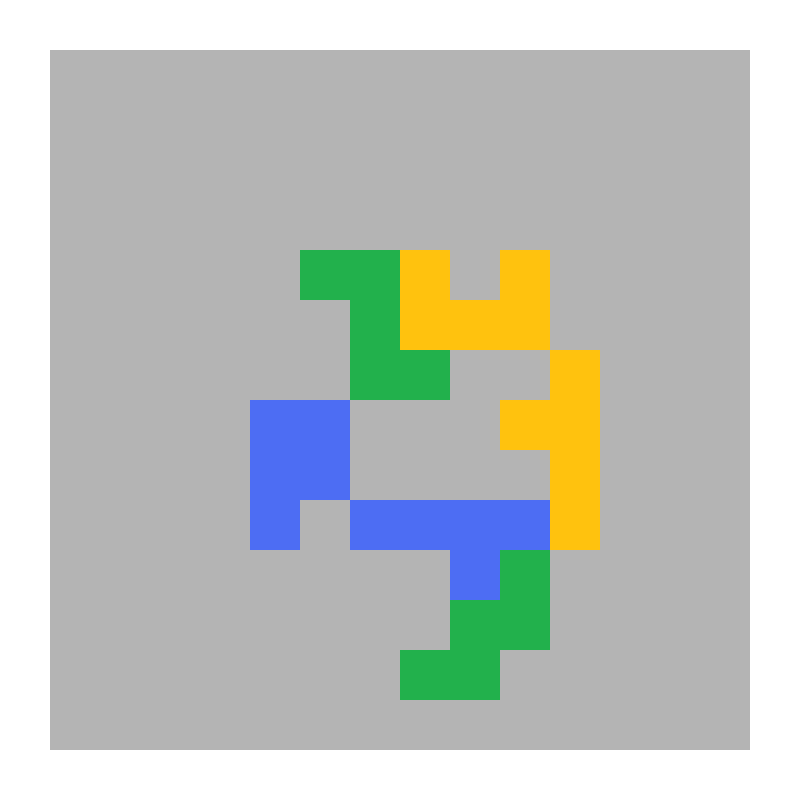
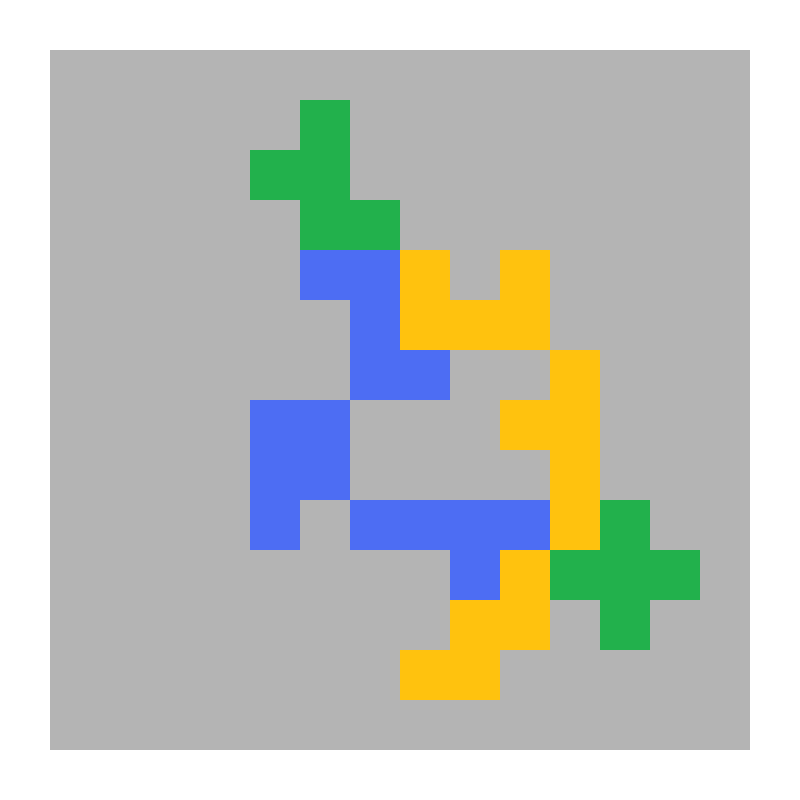
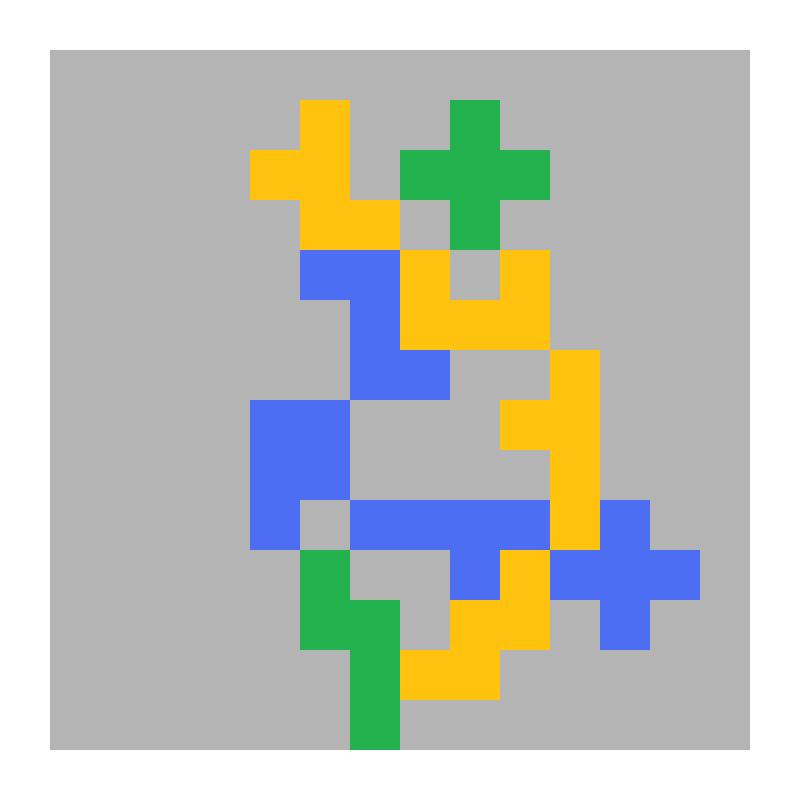
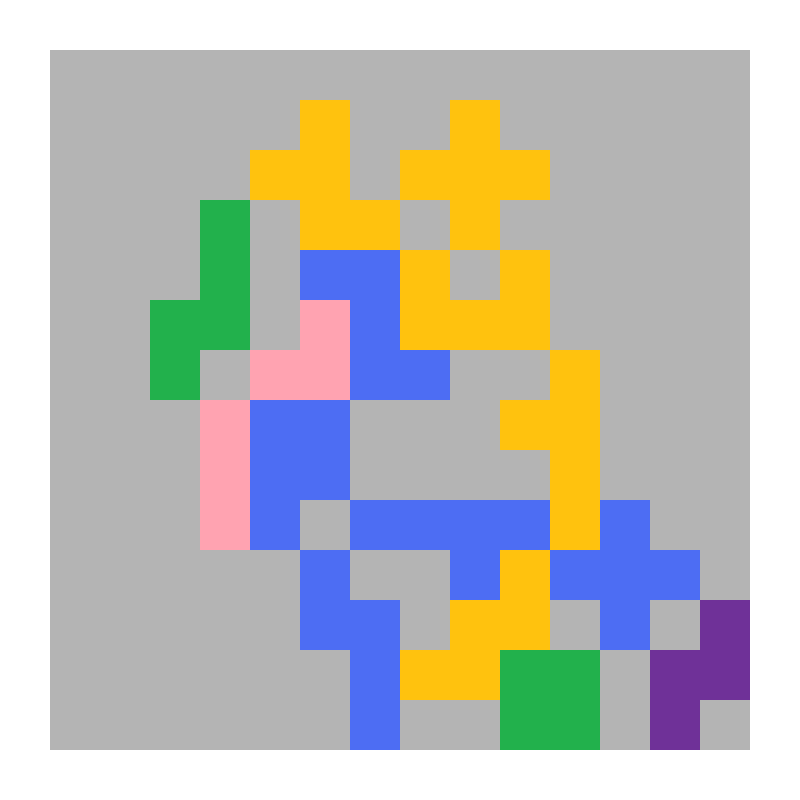
1. both players play a hugging move // 2. both players play a semihugging move // 3. both players play a stonewalling move // 4. both players play a carving move, so that they can play 'secured' moves later (shown in pink and purple)
How to Get Better at Blokus Duo
Aside from the moves and general strategy tips I've showed you, here are a few tips:
Think Ahead
Before you place your piece, think about your opponent's response. Where would they play, and how would that affect your position? You might get away with placing a piece if your opponent doesn't have the right piece to counter it.
Choose the Right Type of Move
I've showed you four types of effective moves. Whenever it's your turn, think about which move will work best for your position. And it's very hard to win by only playing one or two types of moves – I mostly find success with a mixture of all four types of moves.
Play a Lot
This is the best way to improve. Find someone who will consistently play Blokus Duo with you (it's great even if they are better than you). If you lose a game, try to figure out how your opponent outfoxed you.
Conclusion
If you're looking for a good board game, try out Blokus Duo! It's cheap (~$20), easy-to-learn, and makes for a lot of fun. If you want to talk to me about Blokus strategies you've used, email me here.
![So what exactly do I do with my life? [#53]](/content/images/size/w960/2024/05/fabio-comparelli-uq2E2V4LhCY-unsplash.jpg)
![Ranking the 11 APs of my high school career [#49]](/content/images/size/w960/2023/12/my-profit-tutor-2ffbvalZbNA-unsplash-1.jpg)
![Why is the SAT going fully digital?? [#45]](/content/images/size/w960/2023/10/nguyen-dang-hoang-nhu-qDgTQOYk6B8-unsplash--1-.jpg)
![I've recently turned 17 – here are 17 pieces of life advice for teenagers [#41]](/content/images/size/w960/2023/09/siora-photography-1VDWmab-Glk-unsplash-1-1.jpg)